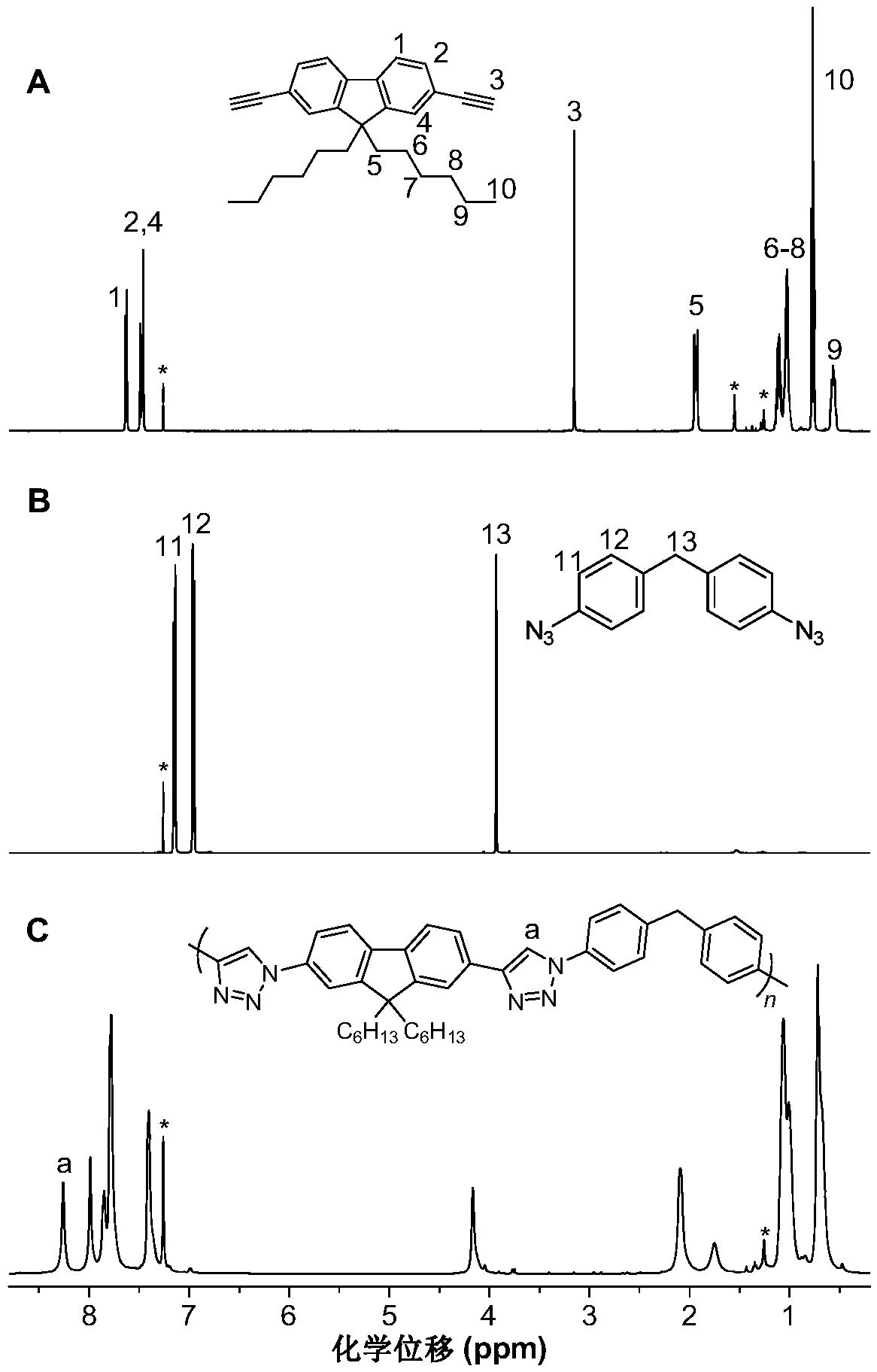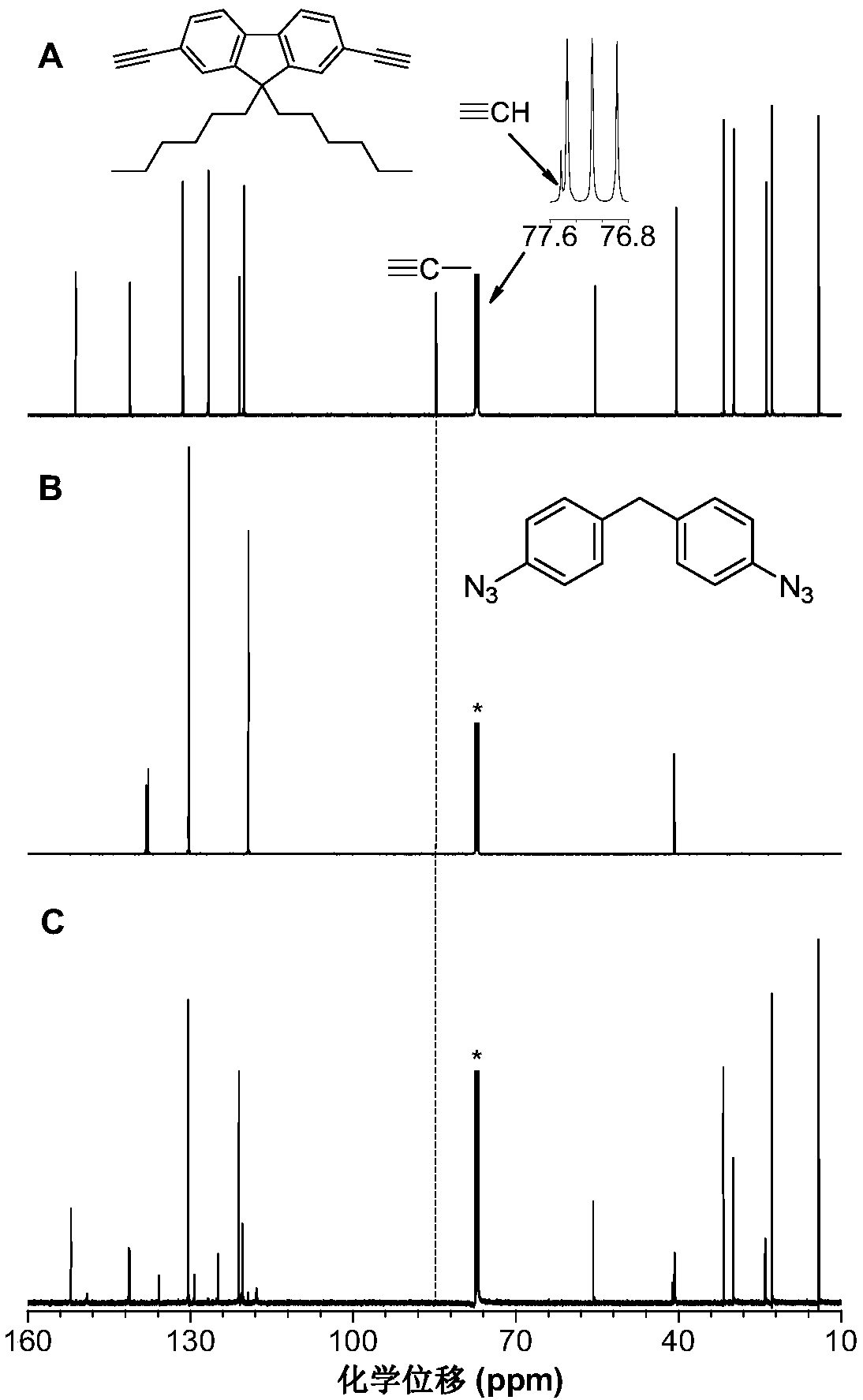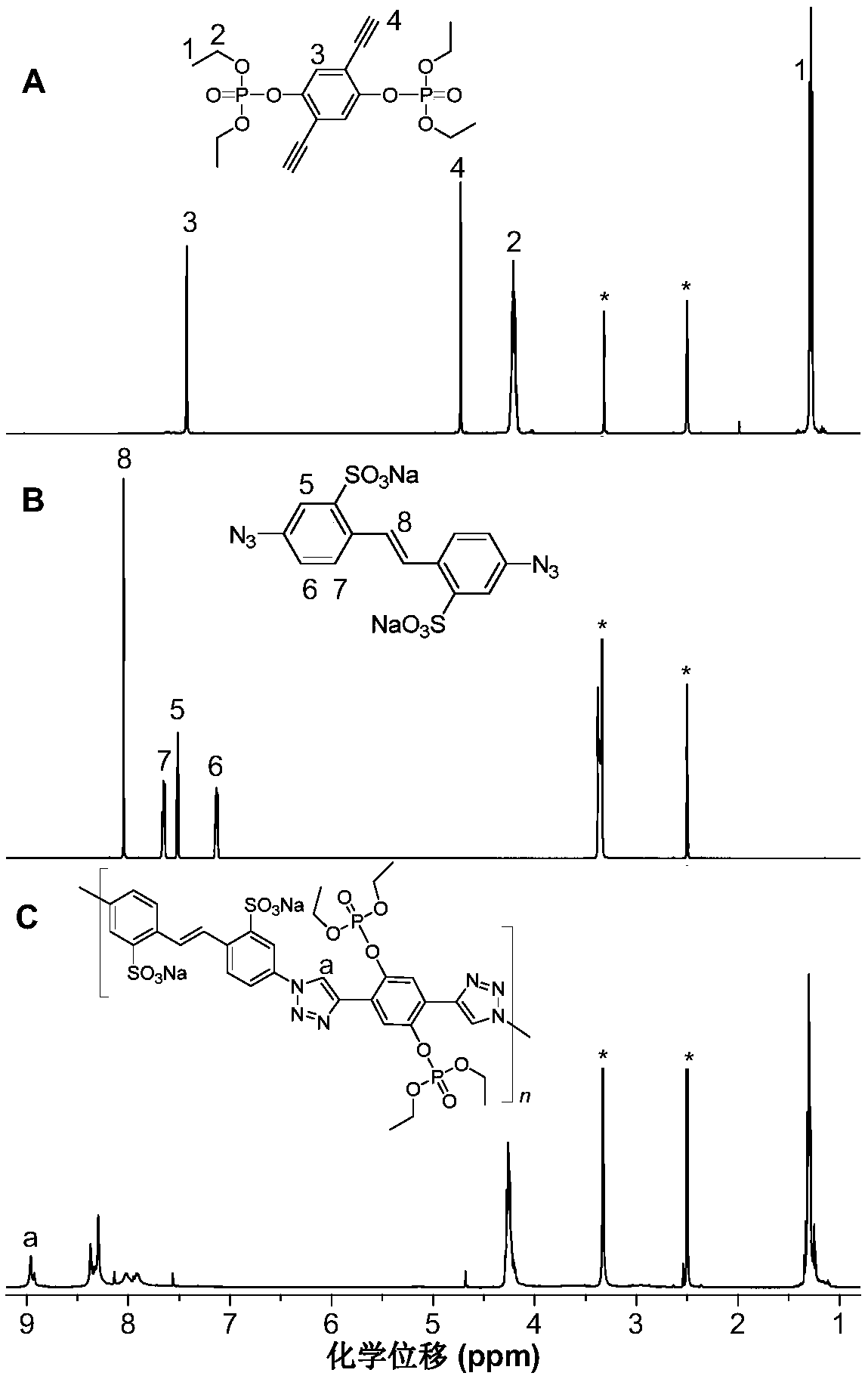Method for preparing 1,4-stereoregular polytriazole by copper ion liquid catalysis, 1,4-stereoregular polytriazole and application thereof
A stereoregular, liquid catalysis technology, applied in the production of bulk chemicals, chemical process analysis/design, instruments, etc., can solve few problems and achieve the effect of simple preparation method, mild conditions, and easy availability of reaction raw materials
- Summary
- Abstract
- Description
- Claims
- Application Information
AI Technical Summary
Problems solved by technology
Method used
Image
Examples
Embodiment 1
[0059] Copper ionic liquid catalyzed M1 and M2 to prepare polytriazole P1.
[0060]
[0061]Among them, the monomer M1 is synthesized according to the synthesis method in the published literature (Eur.J.Org.Chem., 2015, 2015, 4593); M2 is synthesized according to the published literature (Polym.Chem., 2014, 5, 2301) Synthetic method Synthetic. Wherein, the synthetic route of copper ionic liquid (Cu-IL) is as follows:
[0062]
[0063] Copper ionic liquid Cu-IL was synthesized according to the synthesis method in the published literature (Dalton Trans., 2011, 43, 11396). FT-IR (KBr disk), ν (cm -1 ): 3427, 2939, 2886, 1637, 1456, 1258, 1169, 1060, 1033, 641, 576, 520. The decomposition temperature is 188°C.
[0064] Add 25.0mg (0.1mmol) of monomer M1, 38.2mg (0.01mmol) of monomer M2 and 5mg (0.005mmol) of Cu-IL into a 10mL polymerization tube, vacuumize and change nitrogen for 3 times, and inject 2.5mL of ultra-dry N,N-dimethylformamide (DMF), after the monomer is co...
Embodiment 2
[0072] Copper ionic liquid catalyzed M3 and M4 to prepare anionic conjugated polytriazole P2. Among them, monomer M3 was purchased from TCI Company. M4 was synthesized according to the synthesis method in the published literature (Beilstein J.Org.Chem.2014, 10, 1166; Polym.Chem.2014, 5, 2301).
[0073]
[0074] Add 46.6mg (0.1mmol) of monomer M3, 43.0mg (0.1mmol) of monomer M4 and 9.9mg (0.01mmol) of Cu-IL into a 10mL polymerization tube, vacuum and change nitrogen for 3 times, and inject 2mL of ultra-dry DMF, after the monomer is completely dissolved, put it into an oil bath at a constant temperature of 50°C, and react for 2 hours. After the reaction was completed, 2 mL THF was added, and the obtained polymer solution was added dropwise into 60 mL of vigorously stirred methanol, left to stand, filtered, and dried to obtain polytriazole P2. Through measurement and analysis, the productive rate of final product polytriazole P2 is 89%, and weight-average molecular weight is...
Embodiment 3
[0077] Application of Anionic Conjugated Polytriazole P2 in Explosive Detection.
[0078] The detection of explosives is of great significance to national security and anti-terrorism. We used commercially obtained picric acid (PA) as an explosive model to verify the sensitive detection of anionic conjugated polytriazole P2 for explosives. Figure 5A It is the fluorescence spectrum of polytriazole P2 aqueous solution with different content of PA, [P2]=10μM, excitation wavelength: 352nm. 5B is the I of polytriazole P2 0 Stern-Volmer curve of / I-1 and PA concentration, where I is the fluorescence intensity of PA added, I 0 The fluorescence intensity without PA is shown, and the inset is the structural formula of PA. From Figure 5A It can be seen that with the increase of PA content, the fluorescence emission of polytriazole P2 gradually weakens until it is completely quenched, while the shape and position of the fluorescence curve do not change. From Figure 5B The Stern-Vo...
PUM
 Login to View More
Login to View More Abstract
Description
Claims
Application Information
 Login to View More
Login to View More - R&D
- Intellectual Property
- Life Sciences
- Materials
- Tech Scout
- Unparalleled Data Quality
- Higher Quality Content
- 60% Fewer Hallucinations
Browse by: Latest US Patents, China's latest patents, Technical Efficacy Thesaurus, Application Domain, Technology Topic, Popular Technical Reports.
© 2025 PatSnap. All rights reserved.Legal|Privacy policy|Modern Slavery Act Transparency Statement|Sitemap|About US| Contact US: help@patsnap.com



